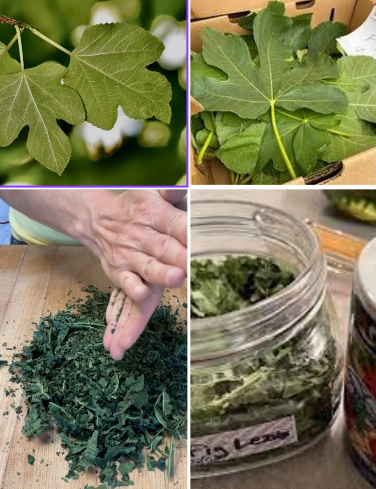It can take a long time for fruits of this type, but they’re super easy to grow, so you’ll probably forget about the waiting time.
Have you been wondering how to start your own citrus tree? It’s not hard if done right. You just need the following steps, instructions and information about planting that will make this happen for many years of fruit-bearing goodness!
Even if you live in the cold, dark months of winter there’s always a way to enjoy tangy citrus.
You can grow your own giant lemon tree! If you have the patience, surrounded by beautiful white flowers and with its sweet scent filling up every corner of home–it’s well worth it.
How to Grow a Huge Lemon Tree
Growing a huge lemon tree indoors is an expensive and laborious task, but it’s simple. In this article we will show you how to make your dream into reality with these tips!
1. Choose the Right Cultivar
When choosing which lemon tree to grow in your home, there are a few options. You can buy one from the local nursery or order seeds and spend time growing that particular variety yourself with great results each time!
Believe it or not, growing your very own lemon tree from a seed is actually quite easy. starting with organic seeds will give you the best chance of success!
You can also grow Meyer lemon trees indoors, but these generally yield smaller fruit than the typical outdoor version. They’re typically six to seven feet tall and have thin yellow skin with a developed scent that’s not too strong for most people’s taste buds!
Ponderosa lemons are more difficult to grow than regular lemon trees, but they can also be taller! These slow-growing plants might not thrive indoors and typically only serve as ornamental trees.
If you want to grow a giant lemon tree, go ahead and choose the Ponderosa. A nursery cultivar that has been grafted onto an dwarf rootstock will keep your containerized friend manageable in size so they can live out their days with plenty of room!
2. Plant Your Tree
Skip this step is you have already purchased a started tree. But, if you want to grow your own lemon tree from seed, then you should first plant the seeds.
You’re going to need a large pot, ideally one that is 12 inches deep and 24 inches wide. You will also need the smaller pot for planting–you can get these at any store or even make your own! Make sure it has good drainage holes so nothing goes root-bound. And, if possible invest in some self watering planters because overwatering could be disastrous.
Next, the small pot needs to be filled with organic all-purpose soil. Add enough so that there are no gaps and make sure it’s damp but not soaking before you fill your smaller pot with this soil (around 1 inch deep) below the rim.
Put your seeds in a little bit of moisture and make sure they are clean. Place them about an inch deep at the center, but don’t cover with soil yet!
Carefully spray the soil above your seeds with water and cover it in clear plastic wrap. Make sure you punch few holes so they can breathe!
To harden-off your seedling, put it in a sunny spot and spray the soil with water occasionally. Make sure there is no standing water at all so that any mold or fungus will not grow on its roots before they emerge from their protective covering.
3. Position it Properly
Lemon trees are tropical plants, so it’s important that you plant them in south facing windows. If not your tree will fail to thrive and yield lemons- the more sunshine they get, the better lemons you’ll enjoy!
Your lemon tree is a tropical plant that needs at least eight hours of sunlight per day in order to grow. You may have trouble growing this citrus fruit without using artificial lighting, so plan ahead!
A lemon tree needs lots of natural air movement if you want it to flourish. The best place for your citrus plant would be outside, with the wind blowing through its leaves and branches every day!
If that’s not possible though – or even if they don’t get enough sun exposure- consider placing some fans around them so gravity isn’t keeping everything grounded longer than necessary.
To grow your lemon tree, make sure that the room you choose is warm. Ideally no cooler than 55 degrees Fahrenheit at night and 70 during the day!
4. Fertilize and Water Regularly
It’s not just about the root system. A well-fed tree is more likely to be an attractive and healthy one, too! Just make sure you are feeding your trees with balanced fertilizers throughout the year to get optimal growth rates. You can use worm castings or other natural amendments like seaweed for increased nutrition benefits in citrus plants.
Have you noticed that your lemon tree has yellow spots? It’s a sign of stress. Fertilize immediately to save it from withering up!
Be sure to water your lemon tree thoroughly and often. Lemon trees need more moisture than other plants, so it is a good idea to start watering them early on in their life cycle!
Be mindful that young seedlings should receive about an inch of water when the soil feels dry, while older ones may only require half or less depending upon climate conditions where they live.
You might think that if you have a lemon tree, the best place for it would be outside in full sun. However, this is not true! The key to maintaining humidity and preventing mold or mildew issues with your lemon fruit tree are 50% air-humidity levels at all times! You can increase the humidity by placing your tree on a tray of stones and occasionally wetting the stones.
Lemon trees are usually disease and pest free, but you can prune off dead brown leaves to encourage growth.
5. Repot As Your Plant Grows
One of the most important steps in caring for a lemon tree is repotting. As your plant grows, you’ll need to move it into its larger pot so that roots can spread out more easily and enjoy all those abundant nutrients within!
A sucker branch is a type of shoot that developed from the rootstock and can grow very quickly. If you notice one, prune it immediately or they may overtake other parts of your tree causing stress for both plant growth as well as its stability.
Why You Should Grow a Huge Lemon Tree
Why shouldn’t you grow a giant lemon tree? These plants are not only easy to grow, but they’re fun. And what’s more is that everyone in your family will want one too once the scent fills their nose with freshness and cleanliness all day long!
You won’t want to buy lemons from the grocery store ever again when you know that these are fresh grown on your tree. It can take a long time for fruits of this type, but they’re super easy to grow, so you’ll probably forget about the waiting time.
Finally, there’s a reason why huge lemon trees are so popular. With their glossy dark leaves and lacy white flowers (and don’t forget about the bright yellow fruits!), they’re absolutely gorgeous! Not only do these plants add an ornamental value to your home but also provide fragrance as well–perfect for any space in need of freshness or cleanliness.





